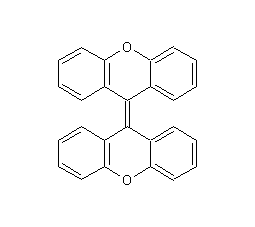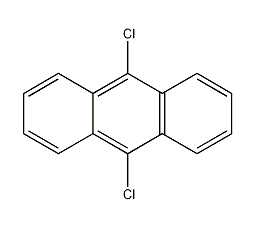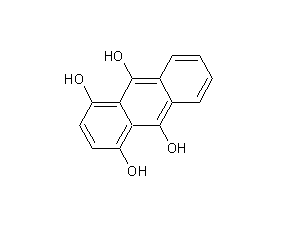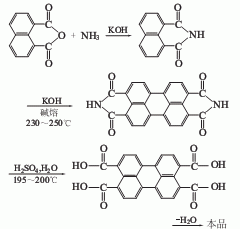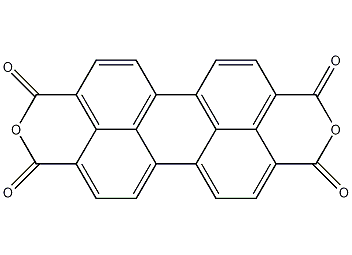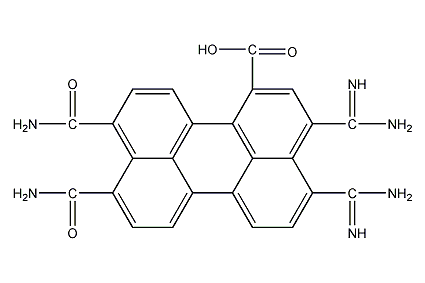9,9′-Dianthracene-10,10′-9H,9’H-dione
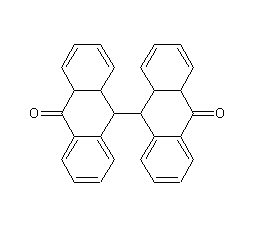

Structural formula
| Business number | 04TP |
|---|---|
| Molecular formula | C28H18O2 |
| Molecular weight | 386.44 |
| label |
(9,9’-dianthracene)-10,10’-(9H,9’H)-dione, 9,10-anthracenedione, (9,9’-Bianthracene)-10,10’(9H,9’H)-dione, 9,10-Dianthrone, BIANTHRONYL, 10,10′-DIHYDROBIANTHRONE, 10,10′-DIHYDRODIANTHRONE, Anthrone dimer |
Numbering system
CAS number:434-84-4
MDL number:None
EINECS number:None
RTECS number:None
BRN number:None
PubChem ID:None
Physical property data
一 , physical property data
Traits :Not available
Density (g/mL,25/4℃): Not available
Relative Vapor density (g/mL, air=1):Not available
Melting point (ºC): Not available
Boiling point (ºC, normal pressure):Not available
Boiling point (ºC, 5.2kPa): Not available
Refraction Rate: Not available
Flash Point (ºC): Not available
Optical rotation (º): Not available
Spontaneous combustion Point or ignition temperature (ºC): Not available
Steam Pressure (kPa, 25ºC): Not available
saturated Vapor pressure (kPa, 60ºC): Not available
Burn Heat (KJ/mol):Not available
Critical Temperature (ºC): Not available
Critical Pressure (KPa): Not available
oil and water Log value of the (octanol/water) partition coefficient:Not available
Explosion Upper limit (%, V/V): Not available
Explosion Lower limit (%, V/V): Not available
Solubility:Not available
Toxicological data
Two , Toxicological data:
Acute Toxicity:Not available .
Ecological data
Three , Ecological data:
1 , Other harmful effects: This substance may be harmful to the environment, and special treatment should be given to water bodies. Notice.
Molecular structure data
1、 Molar refractive index:115.79
2、 Molar volume(m3/mol):316.2
3、 Isotonic specific volume (90.2K):845.5
4、 Surface tension(dyne/cm):51.0
5、 Polarizability(10-24cm3): 45.90
Compute chemical data
1. Reference value for hydrophobic parameter calculation (XlogP): 6.1
2. Number of hydrogen bond donors: 0
3. Number of hydrogen bond acceptors: 2
4. Number of rotatable chemical bonds: 1
5. Number of tautomers: none
6. Topological molecule polar surface area 34.1
7. Number of heavy atoms: 30
8. Surface charge: 0
9. Complexity: 572
10. Number of isotope atoms: 0
11. Determine the number of atomic stereocenters: 0
12. Uncertain number of atomic stereocenters: 0
13. Determine the number of chemical bond stereocenters: 0
14. Number of uncertain chemical bond stereocenters: 0
15. Number of covalent bond units: 1
Properties and stability
None yet
Storage method
None yet
Synthesis method
None yet
Purpose
None yet
